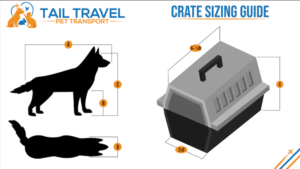Tail Travel is a family-owned and operated pet transport business based in Alice Springs, in the Northern Territory of Australia. Tail Travel has successfully coordinated air freight transport requirements for 1000s of animals Australia wide. We have agents in the capital city of all Australian states and Territories as well as agents located close to many major regional airports. Although we specialise in reptiles, dogs and cats, Tail Travel can organise air freight from the smallest insect to the largest animal for you. We freight with Qantas and Virgin airlines and their affiliates. Tail Travel understand how precious your animals are and treat them as if they were our own!
About Us
Contact Info
Address
Alice Springs, Northern Territory, 0870
Phone
Email
Newsletter Subscribe
© Tail Travel 2021, All Rights Reserved.
Bird Freight - Tail Travel
- Home
- Bird Freight
How to Guide: Freighting Your Pet Birds
Transporting birds via air travel requires careful planning, appropriate equipment, and adherence to airline and regulatory guidelines. This guide outlines key considerations for safely transporting birds, including crate requirements, species-specific needs, and rules for transporting multiple birds.
General Guidelines
- Birds must be transported in airline-approved containers that meet IATA (International Air Transport Association) standards. Requirements vary by bird species, so selecting the correct container is essential.
- Options include small PP crates for larger birds (parrots, ducks, pigeons, chickens) or lightweight timber crates for smaller species.
- Ensure your bird is healthy and has a recent check-up from an avian veterinarian, particularly for long journeys or if the bird is very young, aged, or has special needs.
Container Size and Requirements
The container must be appropriately sized for the species and number of birds, ensuring safety and comfort.
- It must be escape-proof, chew-proof (especially for parrots), and free of sharp edges or protrusions.
- Flooring should be non-slip for non-perching birds (e.g., doves). Perching birds (e.g., parrots) require a secure perch.
- Birds must have access to water. Food access depends on state regulations, as some states prohibit produce in containers.
- Attach labels with “Live Birds,” owner contact information, bird species, and destination. Airport staff typically handle labeling, but including contact details is recommended.
Contact Tail Travel to confirm crate sizing and state-specific regulations.
Species-Specific Container Considerations
Small Birds (Finches, Canaries, Budgerigars)
- Require small, enclosed containers with minimal external stimuli to reduce stress.
- Ventilated containers with limited visibility to prevent panic.
- Multiple finches can share a container if familiar with each other, with adequate perch space.
- Lightweight timber boxes are best suited.
Doves and Pigeons
- Need slightly larger containers for comfortable movement.
- Require limited visual distractions to stay calm.
- More robust than finches but sensitive to environmental changes.
- Can be housed in pairs or small groups if compatible.
- PP crates are suitable if holes are covered with mesh or shade cloth to prevent beak injuries.
Parrots (Cockatoos, Macaws, etc.)
- Require strong containers with smooth interiors to prevent chewing.
- Must have a securely installed perch.
- Travel individually unless a bonded pair, which requires a larger crate.
- High intelligence and sensitivity necessitate crate acclimatization before travel.
- Tail Travel offers rentable large bird crates.
Chickens and Poultry
- Need larger, ventilated crates with solid bottoms.
- Can be transported individually or in groups based on size and temperament.
- Must not be overcrowded; adequate space for standing and turning is essential.
- Crates should facilitate easy cleaning and containment of droppings.
Transporting Multiple Birds
- Only compatible birds from the same species or flock should share a container.
- Airlines allow groups of flocking birds together unless one is overly aggressive, requiring separate housing.
- Birds must be familiar with each other and share space without aggression.
- Each bird needs access to water and sufficient space to move freely.
- Unsure about group limits? Contact Tail Travel for guidance.
Additional Tips for Air Travel
- Acclimate your bird to the crate days or weeks before travel to reduce stress.
- Avoid tranquilizers unless prescribed by an avian veterinarian.
- Do not feed birds 4–6 hours before travel to minimize motion sickness.
- Provide small amounts of high-water-content fruit or vegetables if permitted by state laws.
- Line the crate with newspaper or absorbent bedding to manage waste.
Regulatory and Airline Requirements
- Contact Tail Travel to verify interstate permit requirements. Some states mandate inspections upon arrival to confirm paperwork and breed.
- Ensure crates meet airline regulations for weight, size, and materials.
By following these guidelines, you can ensure the safe and comfortable transport of your feathered companions. For assistance, reach out to Tail Travel.

